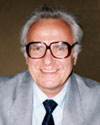Fluorine Notes, 1999, 3, 13-14
|
Polyfluoroarenes. Some results and prospects.The chemistry of perfluoroarenes began to develop intensively at N.N.Vorozhtsov Novosibirsk Institute of Organic Chemistry (Siberian Branch of the Russian Academy of Science) in 1963 after the creation of a method of producing polyfluoroarenes of hexafluorobenzene and chloropentafluorobenzene by hexachlorobenzene heating with KF in an autoclave at 450oC. Commercialization of the method at Perm branch of RSC " Applied Chemistry" allowed to expand the work in the field of the chemistry of polyfluoroarenes in the Soviet Union as much as the interest in these compounds was determined by demands of science and attempts to find out an application for this class of compounds. Besides, the interest to polyfluoroarenes was supported by intensive investigations carried out with this class of compounds in other countries. The next stage was the development of methods to produce the simplest homologues of polyfluoroarenes: octafluorotoluene, perfluoroxylenes and other perfluoromethylarenes and also perfluorobenzocycloalkenes, perfluoroindan in particular, on the basis of copyrolysis reactions of hexafluorobenzene and its derivatives with difluorocarbene sources (CF2=CF2, CHClF2). In co-operation with Perm Branch of RSC AC, these reactions were tested under conditions of pilot installations and at present Perm Branch is capable to produce these products. A method to produce polyfluorostyrenes by copyrolysis of polyfluorobenzotrichlorides with CHClF2 as a source of difluorocarbene has been developed. The created scientific and industrial foundations of producing polyfluoroarenes allow at present to develop investigations in the chemistry of this class of compounds and commercialize their production despite the economic difficulties. Among investigations in the chemistry of polyfluoroarenes, a direction studying skeletal conversions should be noted. These conversions allow in a number of cases to turn from available polyfluoroarenes to inaccessible ones , to study possibility of the formation of polyfluoroarenes from nonaromatic products. Mechanisms of skeletal transformations of the fluorinated side chain of polyfluoroarene on exposure to Lewis acids and antimony pentafluoride especially are under investigation. In case of perfluorobenzocycloalkenes in a medium of SbF5, there were found opening, contraction and expansion of fluorinated alicyclic fragments. A number of polyfluoroindenyl cations ,proved to be stable in contrast to their antiaromatic nonfluorinated analogues, were generated from polyfluoroindens under the action of SbF5. Taking into consideration an interest to low-fluorinated and medium-fluorinated fluoroarenes containing from two to four fluorine atoms in the aromatic ring, we began a research on hydrogenolysis of polyfluoroarenes with the purpose to reduce the number of fluorine atoms in the aromatic ring. Discovered by us in 1991 hydrodefluorination of polyfluoroarenes under the action of Zn allowed to develop hydrogenolysis of polyfluoroarenes with use of Zn in various reduction systems. Attractiveness of this direction is determined not only by a search for new synthetic pathways among polyfluoroarenes but also by an investigation of processes with electron transfer including intermediate formation of anion radicals of polyfluoroarenes. Conversions of functional derivatives of polyfluoroarenes when the action of reagents is aimed at the function with the purpose of its modification or substitution with an another function open a new prospect in the chemistry of polyfluoroarenes. A transfer from an available function to inaccessible one is possible in both cases. For example, there was found a possibility of selective substitution of the mercapto group, easily introduced with the help of nucleophilic reactions, with bromine atoms by means of copyrolysis reactions of polyfluoroarenthiols with bromine (~500-600oC) in a flow-type system. Similarly the mercaptogroup is subsituted with chlorine atoms. That allows to synthesize various polyfluorobromoarenes and polyfluorochloroarenes. One of directions connected with modification of the polyfluoroarene function is a research of reactions with electrophilic reagents. In this case a polyfluoroaromatic compound substituted functionally may be converted by an electrophilic reagent attack of the functional group resulted in its modification. Usually in the hydrocarbon series , reactions of electrophilic reagents take place by hydrogen atom substitution in the aromatic ring with an electrophile and the orientation of electrophilic substitution is determined by the character of the substituent. Thus, substitution of hydrogen atoms with fluorine in an arene containing a functional group could allow to study mechanisms of function conversions under influence of electrophilic reagents that is often impossible in the hydrocarbon series. In this case a more complete conception of conversions of polyfluoroarenes under the action of electrophilic reagents including polyfluorination influence on the substituent reactivity in the polyfluoroarene could be received. Using such conceptions, a number of polyfluoroarenes containing reactive imidoyl chloride groups -N=CCl2 and -N=CClR were produced and properties of this group of compounds formerly unavailable were investigated. For example, there was found a possibility to use them as new electrophilic reagents ( in the presence of AlCl3) that allows to introduce reactive groups ArFN=CCl- or ArFN=CAr- into the electron-donating molecule of the reagent ( aromatic hydrocarbons, aromatic amines). Finally, the results of the investigations in the chemistry of polyfluoroarenes permit despite the economic difficulties to place our hopes in the prospects in this field on the threshold of the 21 century. |
Fluorine Notes, 1999, 3, 13-14

